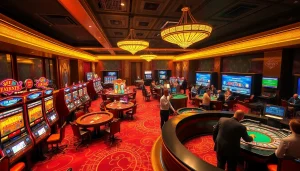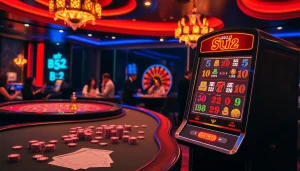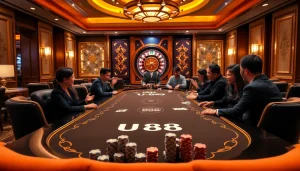Luxury Unveiled: The Essence and Trends of High-End Living

Understanding Luxury: Definition and Perception
What is Luxury? Key Concepts and Definitions
Luxury, a term that conveys elegance and opulence, is frequently associated with high-end goods, exclusive experiences, and an elevated lifestyle. At its core, luxury represents comfort, sophistication, and indulgence, often seen as non-essential but highly desirable. It is defined as a condition of great ease and comfort resulting from an abundance of material goods. Therefore, luxury goods include items such as designer apparel, luxury automobiles, fine jewelry, and haute cuisine, which exceed the basic needs of individuals but provide exceptional value through their quality, craftsmanship, and exclusivity.
The Psychological Appeal of Luxury Goods
The attraction to luxury goods extends beyond mere material needs; it taps into deep psychological desires. Consumers often purchase luxury items as a means of enhancing their self-image, signaling status and success. The psychological appeal can be traced to several factors: social status, identity, and the emotional connection one feels towards luxury brands. When an individual buys a luxury product, they are often buying into a narrative woven by the brand—an aspiration to a lifestyle that signifies not just wealth, but taste and acceptance.
Cultural Differences in Luxury Perception
Luxury is perceived differently across various cultures, influencing consumer behavior significantly. In Western societies, luxury is often linked to individualism, where personal achievement sparks a desire for luxury goods as markers of success. Conversely, in Eastern cultures, such as China, luxury items are sometimes seen as symbols of social cohesion, where ostentation may reflect the family’s wealth or signify social ranking. Understanding these cultural nuances is vital for luxury brands aiming to tailor their marketing strategies effectively and connect authentically with diverse consumer bases.
The Evolution of Luxury: From Classic to Contemporary
Historical Development of Luxury Goods
The concept of luxury has evolved significantly throughout history. In ancient civilizations, luxury was often associated with power and status; only the elite could afford precious stones and extravagant materials. For example, in ancient Rome, fine silks and gold were symbols of power among its aristocracy. As time progressed, luxury goods began to permeate different social classes during the Renaissance, enabling a wider audience to experience fine clothing, artwork, and furnishings. The Industrial Revolution marked another tipping point, democratizing luxury and fostering mass production yet still maintaining exclusive brands for the elite.
Contemporary Luxury Brands and Their Market Influence
Today, contemporary luxury is defined largely by brands such as Louis Vuitton, Gucci, and Chanel. These brands exert tremendous influence over market trends, embodying not only high-quality craftsmanship but also aspirational lifestyles. Their success is intertwined with carefully curated marketing strategies that emphasize heritage, exclusivity, and emotional storytelling. Luxury brands have become adept at leveraging social media, allowing them to engage with younger generations while preserving their prestigious image. This balance between tradition and innovation has allowed brands to adapt to modern consumers’ demands while maintaining their allure.
How Technology is Shaping Luxury Experiences
Technology has become an integral element in the luxury sector, creating immersive and personalized shopping experiences. Luxury retailers are increasingly investing in omnichannel strategies, utilizing augmented reality (AR) and virtual reality (VR) to enhance customer interaction. For instance, luxury fashion houses are adopting “virtual fitting” technologies that allow consumers to visualize how clothing fits without the need for a physical try-on experience, thus merging convenience with luxury. Moreover, e-commerce has expanded luxury access, although brands must maintain exclusivity through limited releases and personalized customer experiences to uphold their premium image.
Luxury Consumption Trends: What Buyers Want
Current Trends in Luxury Purchases
The luxury market is witnessing significant changes fueled by evolving consumer preferences. Current trends indicate a move towards experiences rather than products. Travelers, for instance, prioritize luxury travel experiences, such as personalized itineraries or unique accommodations. Furthermore, consumers are increasingly inclined towards limited-edition releases and exclusive collaborations, which enhance the perceived value of their purchases. Findings suggest that buyers are not just spending more but are becoming more selective and discerning about where and how they spend their money.
How Sustainability Affects Luxury Consumption
As consumers become more environmentally conscious, sustainability has emerged as a key focus in the luxury market. Brands now face pressure to demonstrate their social and environmental responsibility, influencing purchasing decisions significantly. The rise of “sustainable luxury” incorporates ethical sourcing, eco-friendly production methods, and transparency in supply chains. For example, brands like Stella McCartney and Gucci are at the forefront of this movement, emphasizing sustainability while maintaining exceptional quality and exclusivity. Such brands not only appeal to conscious consumers but also reinforce their brand reputation through responsible practices.
Luxury Consumer Profiles: Who Buys Luxury?
Understanding the demographics of luxury consumers is crucial for effective marketing strategies. Luxury buyers range from high-net-worth individuals (HNWIs) to millennials and Generation Z who value aesthetics, experiences, and sustainability. HNWIs typically look for exclusivity and personalization; thus, brands may offer bespoke services tailored to individual preferences. Younger consumers, on the other hand, are significantly influenced by social media and brand storytelling, often seeking brands that advocate for social causes and showcase authenticity. Identifying and catering to these diverse profiles is essential for luxury brands to maintain relevance and drive sales in an evolving market landscape.
The Impact of Luxury Branding: Strategies for Success
Key Principles of Effective Luxury Branding
Luxury branding is anchored in several key principles that foster a connection with consumers. These principles include exclusivity, heritage, quality, and emotional engagement. By highlighting heritage, luxury brands can communicate their longstanding traditions and craftsmanship, which adds intrinsic value to their products. Furthermore, exclusivity can be achieved through limited releases, allowing brands to control supply and heighten demand. Emotional engagement, through storytelling and experiential marketing, also plays a critical role. Successful luxury brands often create narratives that transcend the product itself, enveloping consumers in a lifestyle that reflects their aspirations.
Case Studies: Successful Luxury Brands
Analyzing prominent luxury brands can shed light on successful strategies employed in the industry. For instance, Hermès has meticulously maintained its brand legacy by producing limited quantities of its iconic Birkin bag, leading to sustained demand and high resale values. Another key player, Rolex, has created an aura of exclusivity by maintaining its prices and limiting availability while simultaneously integrating cutting-edge technology in its products. Brands like these exemplify how maintaining heritage and exclusivity can lead to long-term success in the luxury market.
Challenges in the Luxury Market and How to Overcome Them
Despite the lucrative nature of the luxury market, brands face numerous challenges. Increased competition from fast fashion and counterfeit goods can dilute brand exclusivity. To combat this, luxury brands must invest in innovation and improve consumer loyalty through enhanced customer experiences. Additionally, maintaining relevance in a digital-first world may prove challenging; however, building strong online presences can bridge the gap. Luxury brands employing influencer collaborations can tap into younger demographics, ensuring their offerings align with contemporary trends while preserving brand integrity.
Future of Luxury: Predictions and Insights
Emerging Markets for Luxury Goods
As the global economy evolves, emerging markets present exciting opportunities for luxury brands. Regions such as Asia-Pacific, particularly China and India, are becoming significant contributors to global luxury consumption. The affluent middle class in these regions is expanding rapidly, accompanied by a desire for luxury products that signify status. Luxury brands are increasingly focusing their marketing and distribution strategies in these regions to capitalize on the burgeoning appetite for luxury goods. Tailoring products and experiences to suit local tastes will be essential for success in these emerging markets.
The Role of Digital Transformation in Luxury
Digital transformation continues to reshape the luxury landscape. The pandemic accelerated digital adoption across sectors, pushing luxury brands to enhance their online presence. E-commerce platforms, social media campaigns, and digital marketing have become crucial components of luxury strategies. Virtual showrooms and personalized shopping experiences provide consumers with seamless access to luxury goods, regardless of geographic barriers. As technology progresses, integrating artificial intelligence (AI) and big data analytics will allow brands to create tailored experiences based on consumer behavior, thus enhancing engagement and conversion rates.
What’s Next for the Luxury Industry?
The luxury industry is on the cusp of tremendous change, marked by an increasing emphasis on sustainability, technology, and inclusivity. As younger generations take the reins as primary consumers of luxury, their values will shape the market, advocating for transparency and responsibility from brands. Innovations in materials, improved customization options, and investments in ethical practices will likely define the next era of luxury goods. Brands that adapt to these trends, remaining dynamic and responsive to consumer needs, will thrive in an increasingly competitive landscape.




